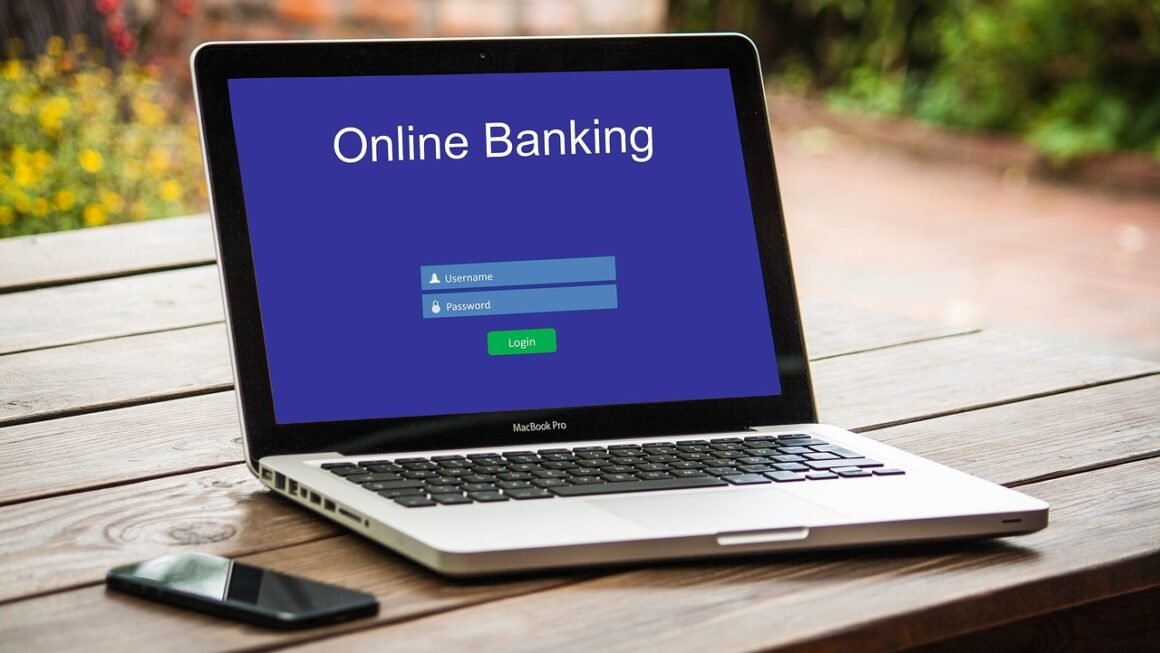Securing your website is no longer optional; it’s an absolute necessity. In today’s digital landscape, where data breaches and cyber threats are rampant, an SSL certificate is your first line of defense, protecting your visitors’ sensitive information and building trust in your brand. Let’s delve into the world of SSL certificates and understand how they can safeguard your online presence.
What is an SSL Certificate?
Defining SSL and TLS
At its core, an SSL (Secure Sockets Layer) certificate enables a secure connection between a web server and a web browser. While SSL is the commonly known term, its successor, TLS (Transport Layer Security), is the actual protocol in use today. Think of SSL as the legacy name that stuck. Both protocols encrypt data transmitted between the server and the client, preventing eavesdropping and tampering.
How SSL Certificates Work
When a user visits a website secured with an SSL certificate, their browser verifies the certificate’s authenticity. This verification process involves several steps:
- The browser requests the website’s identity.
- The server sends a copy of its SSL certificate.
- The browser checks if the certificate is trusted, issued by a valid Certificate Authority (CA).
- If everything checks out, the browser establishes a secure, encrypted connection.
This secure connection is indicated by the padlock icon in the browser’s address bar and the “https” prefix in the URL. Without an SSL certificate, the connection remains unencrypted (“http”), leaving data vulnerable.
The Role of Certificate Authorities (CAs)
Certificate Authorities (CAs) are trusted third-party organizations that issue SSL certificates. They verify the identity of the website owner before issuing a certificate, ensuring that the website is legitimate. Examples of well-known CAs include:
- DigiCert
- Sectigo (formerly Comodo CA)
- Let’s Encrypt (a free, automated, and open CA)
- GlobalSign
When choosing a CA, consider factors like brand reputation, customer support, and the types of certificates they offer.
Types of SSL Certificates
Domain Validated (DV) Certificates
DV certificates offer the most basic level of validation. The CA verifies that the applicant owns the domain name. They are quick and easy to obtain, making them suitable for blogs and small websites that don’t handle sensitive user data. A typical DV certificate verification might involve receiving an email at an address associated with the domain.
Organization Validated (OV) Certificates
OV certificates provide a higher level of trust than DV certificates. The CA verifies the organization’s identity, including its name, address, and phone number. This type of certificate is suitable for businesses and organizations that want to demonstrate their legitimacy to visitors. OV validation typically involves a phone call or verification of business registration documents.
Extended Validation (EV) Certificates
EV certificates offer the highest level of trust and validation. The CA conducts a thorough background check on the organization, verifying its legal existence, physical presence, and operational legitimacy. Websites with EV certificates display the organization’s name in the address bar, providing a clear visual indicator of trust. EV certificates are commonly used by e-commerce sites, banks, and other organizations that handle sensitive financial data. The validation process for an EV certificate is the most rigorous and can take several days.
Wildcard SSL Certificates
Wildcard SSL certificates secure a domain and all its subdomains. For example, a wildcard certificate for *.example.com would secure www.example.com, blog.example.com, and shop.example.com. Wildcard certificates are a cost-effective solution for websites with multiple subdomains.
Multi-Domain (SAN) Certificates
Multi-Domain (SAN) certificates, also known as Unified Communications Certificates (UCC), secure multiple different domain names and subdomains with a single certificate. This is useful for organizations that own several distinct domains. A typical SAN certificate might secure example.com, example.net, and www.example.org.
Benefits of Using an SSL Certificate
Enhanced Security
The primary benefit of an SSL certificate is enhanced security. It encrypts data transmitted between the web server and the browser, protecting sensitive information such as:
- Usernames and passwords
- Credit card details
- Personal information
- Medical records
This encryption prevents hackers from intercepting and stealing data, safeguarding your visitors’ privacy.
Improved SEO Ranking
Search engines like Google prioritize websites with SSL certificates. Google has explicitly stated that HTTPS is a ranking signal. By securing your website with an SSL certificate, you can improve your search engine ranking and attract more organic traffic. Studies have shown that websites with HTTPS experience a noticeable boost in search visibility.
Increased Trust and Credibility
An SSL certificate builds trust and credibility with your visitors. The padlock icon in the browser’s address bar assures users that their information is secure. This is especially important for e-commerce sites, where customers need to feel confident that their financial details are protected. A 2023 study found that 84% of online shoppers look for the padlock icon before making a purchase.
Compliance with Regulations
Many industry regulations, such as the Payment Card Industry Data Security Standard (PCI DSS), require websites to use SSL certificates. Complying with these regulations is essential for businesses that handle sensitive data. Failure to comply can result in hefty fines and reputational damage.
Better Conversion Rates
A secure website can lead to higher conversion rates. When visitors feel confident that their information is safe, they are more likely to complete purchases, sign up for newsletters, and engage with your content. One e-commerce site reported a 20% increase in conversion rates after implementing an SSL certificate.
Installing and Managing SSL Certificates
Choosing the Right Certificate Authority
Selecting the right CA is crucial. Consider factors like:
- Reputation: Choose a well-established and trusted CA.
- Price: Compare prices from different CAs, but don’t compromise on security.
- Support: Ensure the CA offers reliable customer support.
- Validation Level: Choose a certificate type (DV, OV, or EV) that meets your security needs.
Generating a Certificate Signing Request (CSR)
A CSR is a block of encoded text that you generate on your server. It contains information about your domain name and organization. You’ll need to provide this CSR to the CA when applying for an SSL certificate. The process for generating a CSR varies depending on your web server software. Common tools include OpenSSL, cPanel, and Plesk.
Installing the SSL Certificate on Your Server
After the CA issues your SSL certificate, you’ll need to install it on your server. This typically involves uploading the certificate files to your server and configuring your web server software to use the certificate. The installation process also depends on your web server software, with detailed guides available for Apache, Nginx, and IIS.
Renewing SSL Certificates
SSL certificates have an expiration date. It’s essential to renew your certificate before it expires to maintain a secure connection. Many CAs offer automated renewal services to simplify the process. Let’s Encrypt certificates, for example, are designed to be automatically renewed using tools like Certbot.
Monitoring SSL Certificate Health
Regularly monitor your SSL certificate to ensure it’s valid and functioning correctly. You can use online tools to check the status of your certificate and identify any potential issues, such as incorrect installation or expiring certificates. Tools like SSL Labs’ SSL Server Test can provide detailed analysis of your SSL configuration.
Common SSL Certificate Issues and Troubleshooting
Mixed Content Errors
Mixed content errors occur when a website uses both HTTPS and HTTP resources. This can happen if some elements on your page, such as images or scripts, are loaded over HTTP. Browsers often block mixed content, which can affect the appearance and functionality of your website. To fix mixed content errors, ensure that all resources are loaded over HTTPS. You can use browser developer tools to identify and correct mixed content issues.
Certificate Not Trusted
If a browser displays a “Certificate Not Trusted” error, it usually means that the certificate is self-signed or issued by an untrusted CA. Ensure that your certificate is issued by a reputable CA and that the intermediate certificates are installed correctly. You may need to install the CA bundle on your server.
Expired Certificates
An expired SSL certificate will cause browsers to display a security warning, deterring visitors from accessing your website. Monitor your certificate expiration dates and renew them well in advance. Consider using automated renewal tools to prevent expiration issues.
Incorrect Domain Name
The SSL certificate must be issued for the correct domain name. If the certificate is issued for a different domain, visitors will see a security warning. Double-check that the domain name in the certificate matches the domain name of your website.
Conclusion
Securing your website with an SSL certificate is a fundamental step towards protecting your visitors’ data, improving your SEO ranking, and building trust in your brand. By understanding the different types of SSL certificates, their benefits, and how to install and manage them, you can ensure a secure and successful online presence. Don’t wait until it’s too late—invest in an SSL certificate today and safeguard your website from potential threats. The padlock icon and “https” are now expected by users and search engines alike.



